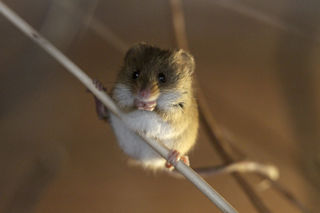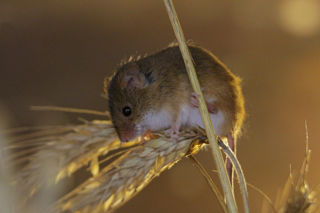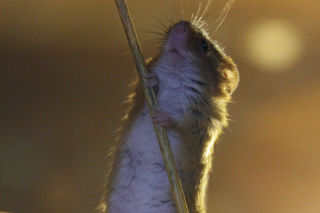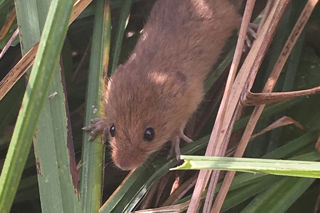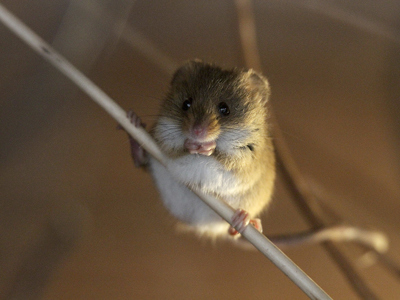
Conservation spotlight - Harvest Mouse
2nd Dec 2020
Species: Eurasian harvest mouse
Looks
The UK’s smallest rodent, weighing only about 4-6 gram. Golden brown or orange fur, with a lighter underside. The tail is the same length as the body and is prehensile (able to grip and hold objects).
Habitat (living spaces)
Typically found in grasslands and areas associated with agriculture, including hedgerows and road verges. Lives in dense vegetation where it uses grass to weave round nests. It is also found in wetlands such as reed beds and river banks.
The harvest mouse is found throughout Europe (not in Scandinavia) and is native to the UK.
Status in the UK
While locally widespread, it is thought to be in decline nationally. The IUCN red list* classifies the harvest mouse as near threatened in most of Britain and critical in Scotland.
The harvest mouse faces threats from habitat loss and changed agricultural practices, such as intensive management of field margins and hedges and the increased use of pesticides. The fragmentation of the landscape caused by more intensive farming also means that the resident mice become more and more separated. Road verges, where many harvest mice live, are also cut more often and intensely.
Importance for nature
As with so much of our wildlife, the harvest mouse plays an important part in maintaining healthy ecosystems and preserving biodiversity and they form an important part of the food chain. Harvest mice also eat pests such as snails and insects which can be a nuisance to e.g. agriculture production.
Wildwood’s work
Wildwood informs the public of the importance of the harvest mouse through courses, media work and in our wildlife park near Canterbury. We recently led a 5 year survey into the status of the harvest mouse in Kent. The results give a thorough insight into the threats facing the mouse both here and in the rest of the Southeast.
See the results here: https://kent.wildwoodtrust.org/conservation/kent-harvest-mouse-survey-a-hlf-funded-citizen-science-project/
*The IUCN red list is an indicator list showing the conservation status of most wildlife on earth. Species can be classified as Least Concern (LC), Near Threatened (NT), Vulnerable (VU), Endangered (EN), Critically Endangered (CR), Extinct In The Wild (EW), Extinct (EX)

